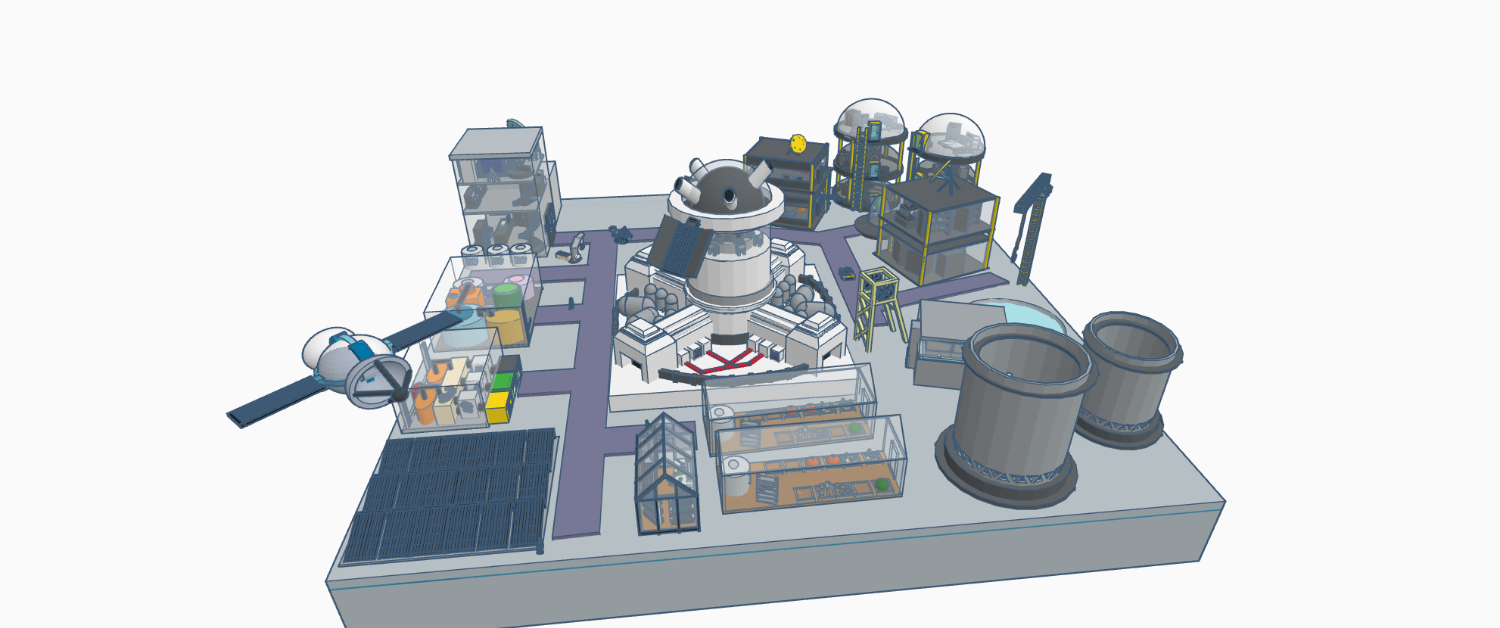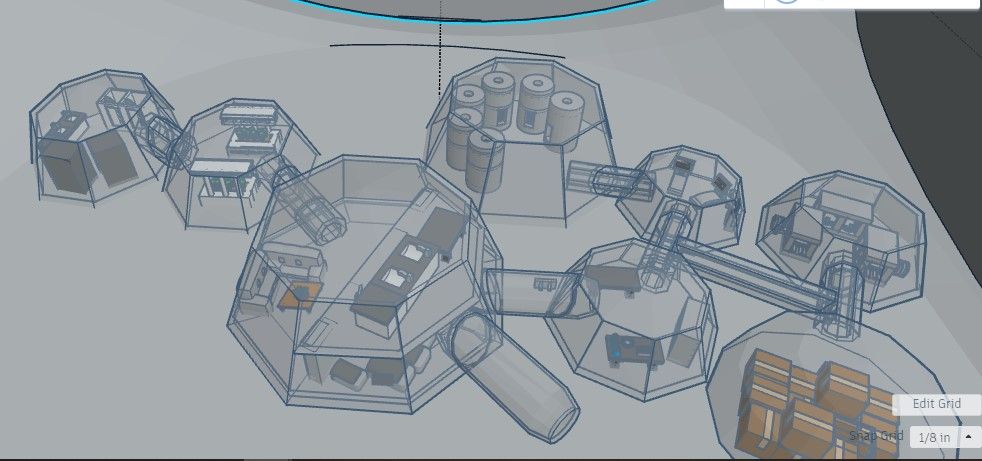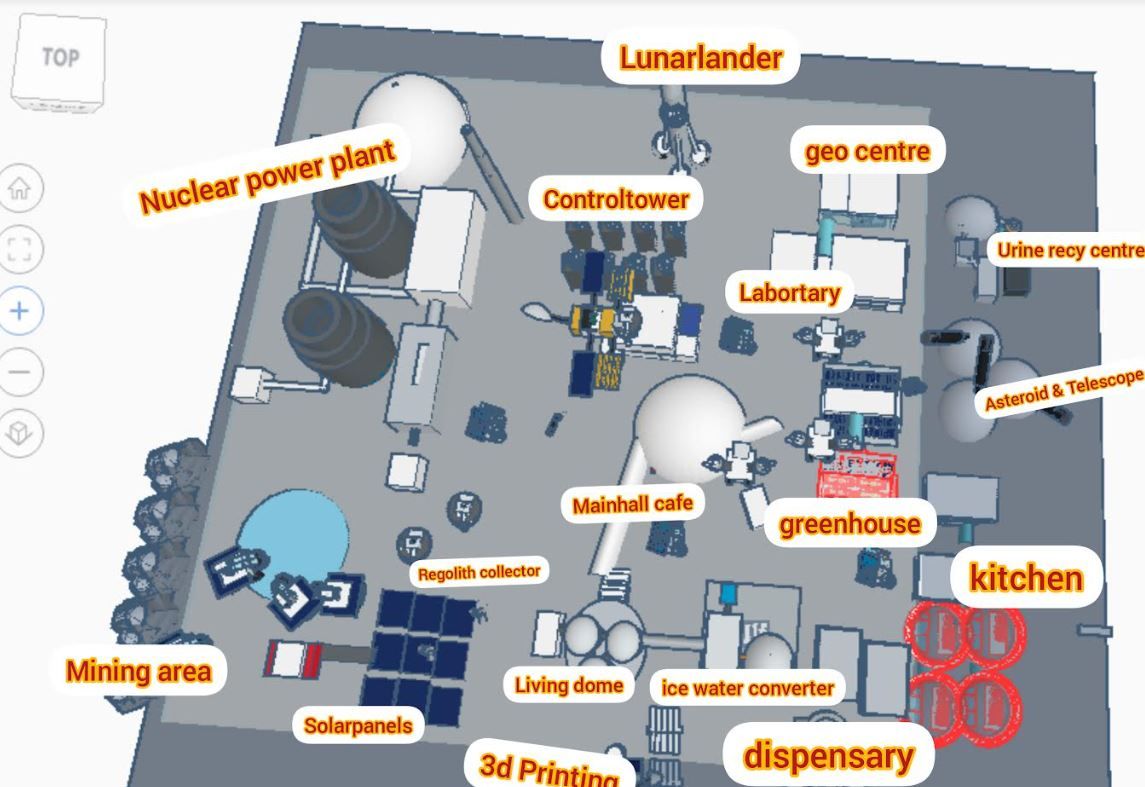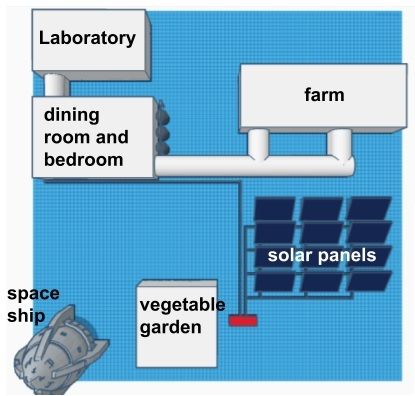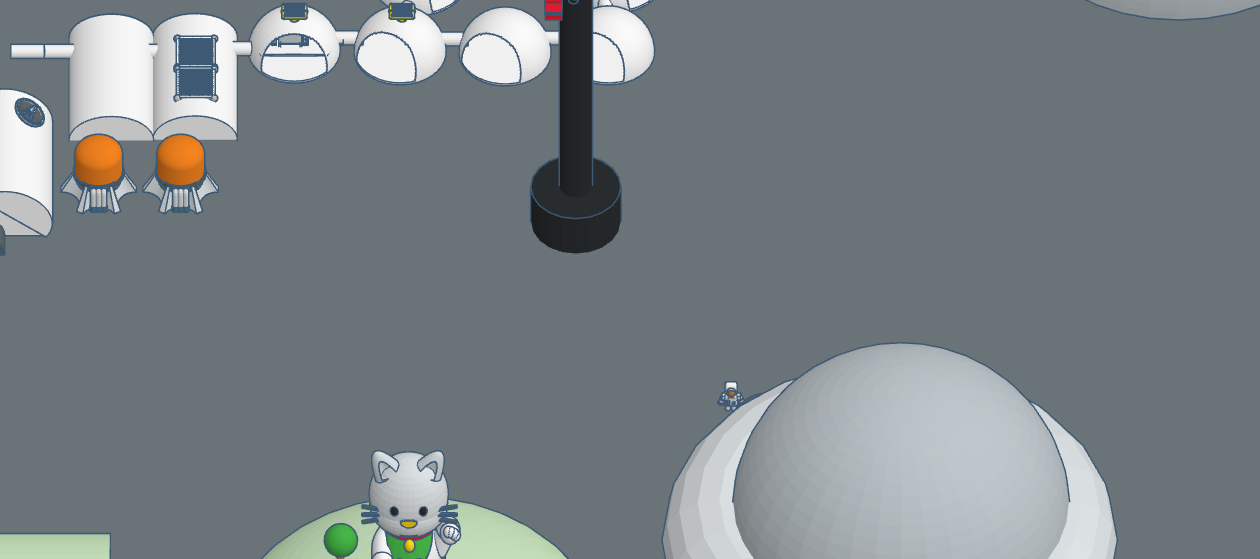Moon Camp Explorers Gallery 2021-2022
In Moon Camp Explorers each team’s mission is to 3D design a complete Moon Camp using Tinkercad. They also have to explain how they will use local resources, protect astronauts from the dangerous of space and describe the living and working facilities.
Team: PAAA – Per aspera ad astra
Szkoła Podstawowa nr 4 im. Mikołaja Kopernika Bytom Poland 13 2 / 2
External link for 3d
|
Project description
Our base is called PAAA. It is an acronym for the Latin sentence Per aspera ad astra which mean Through hardships to the stars. Our base consists of 14 buildings. In upper right corner there are (2) dwellings, each of them has a bathroom, kitchen and a bedroom with a bed and a table. Next to the apartments there is an outdoor storage with a food pantry and a warehouse, where we keep tools and spare parts. Then we can see a Lunar Mine, Drilling Robots and Lunar Ice. In the lower right corner there is the Nuclear Power Plant and Managment Control. |
||||
|
Where do you want to build your Moon Camp?
Close to the lunar poles Why did you choose this location?
We choose Lunar Poles, becouse temperature on Lunar Poles is higher than another places. Another reason is that Lunar Ice is located there. It It enables the production of oxygen and plant growing. It is essential for human survival. Another advantage is that the sun stays up longer. It have positive impact on plants. It is easier to comiunicate with Earth from Lunar Poles. How do you plan to build your Mooncamp? Which materials will you use?
Most of the components will be built using a 3D printer, which will initially be transported to the Moon. Larger components or more complex structures will be transported by ship. Highly porous ceramic foams will be our material of choice for thermal insulation of residential buildings. Because of their heat resistance and high thermal insulation, less material will be used to pad buildings, and due to better thermal insulation, less energy will be consumed, reducing operating costs and environmental impact. The panes of glass in buildings will be resistant to harmful radiation and UV rays. |
||||
|
Water
|
Food
|
Electricity
|
Air
|
Protection
|
|
Due to the fact that our base is located close to the South Pole, we have an easily accessible Lunar Ice, which is a source of water. Water is obtained in a very complex. It all starts with the crane. It all starts with a crane to which a special Lunar Ice pick-up machine is connected. The ice then goes to the drilling robots which grind it into small pieces and transport it to the treatment plant, where the mash is turned into liquid and then filtered through the seven stage reverse osmosis system. And then it gets cleansed of any remaining toxins. If a specialized system detects harmful agents, the water will be filtered again. When the water is properly purified, it is transported to the boilers from H2O. In the event of an accident, water supplies from Earth are delivered to the camp. |
Meals are brought from earth. They will be composed by trained nutritionists who think about the energy demand and vitamins needed to survive in the cosmic atmosphere. Dishes will consist of canned food, vegetables and fruits. Snacks will fold up of nuts and energy bars. In addition to meals, the main source of food is algae, which have many minerals and nutritional values. Protein, which is necessary for human life, will be provided by dried meat and legumes. Cosmonauts will supplement the missing microelements. Vegetables and fruits will be grown in specially adapted greenhouses that have their own irrigation system. |
The main source of energy will be a nuclear power plant and solar panels. We chose a nuclear power plant because it is more efficient than others. The second source of energy will be the solar panel farm. The Moon is rich in silicon, thanks to which in the future it will be possible to produce more photovoltaic cells. |
The air consists of 78% atose, 21% oxygen and 1% argon and other noble gases. Nitrogen must be drained from the Earth because there is not enough of it on the Moon. It can also be captured from dying plants. A large part of oxygen is obtained through plants, e.g. algae. Another way to obtain it is to drain it from the water and store it in tanks. When we get all the components of the air, we will mix them and use special devices to transport them to all rooms. |
We will use glazing that will protect against harmful radiation. The panes will be separated, and argon gas will be let into the resulting spaces to dramatically improve the thermal insulation properties of the glazing. The more panes and spaces between them, the better the insulation. The glazing will be made of several layers of materials: Plexiglas (protection from damage) and Polycarbonate (protection from radiation). In order to improve thermal insulation of the buildings we will use areogel (it will also be used as an insulation layer in spacesuits). We will also use polyurethane foams, which is very easy to install and has a very low thermal conductivity. With these materials we will ensure proper thermal insulation of the buildings. |
|
Describe a day on the Moon for one of your Moon Camp astronauts
An exemplary day of one of the astronouts: |
||||





















